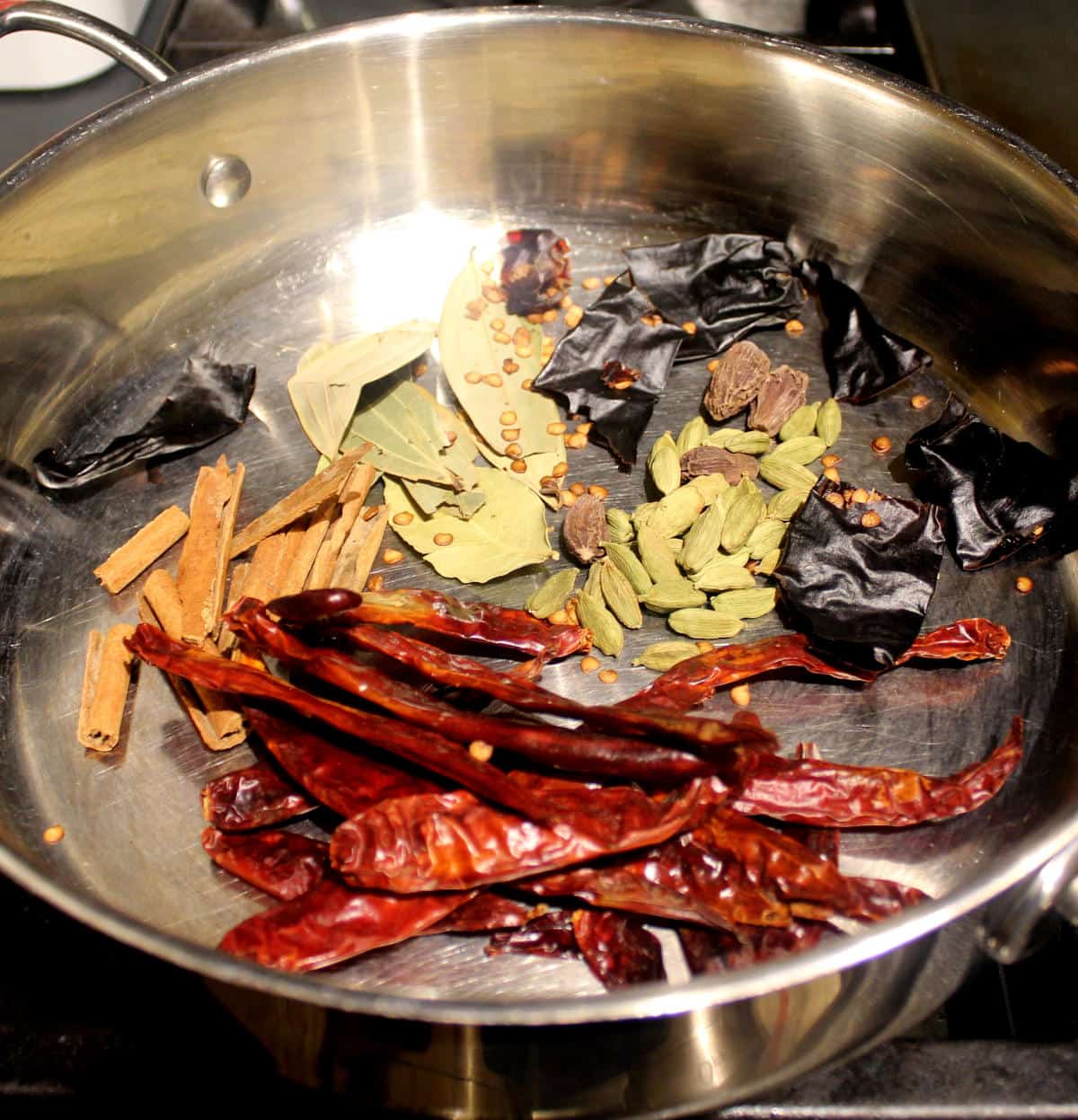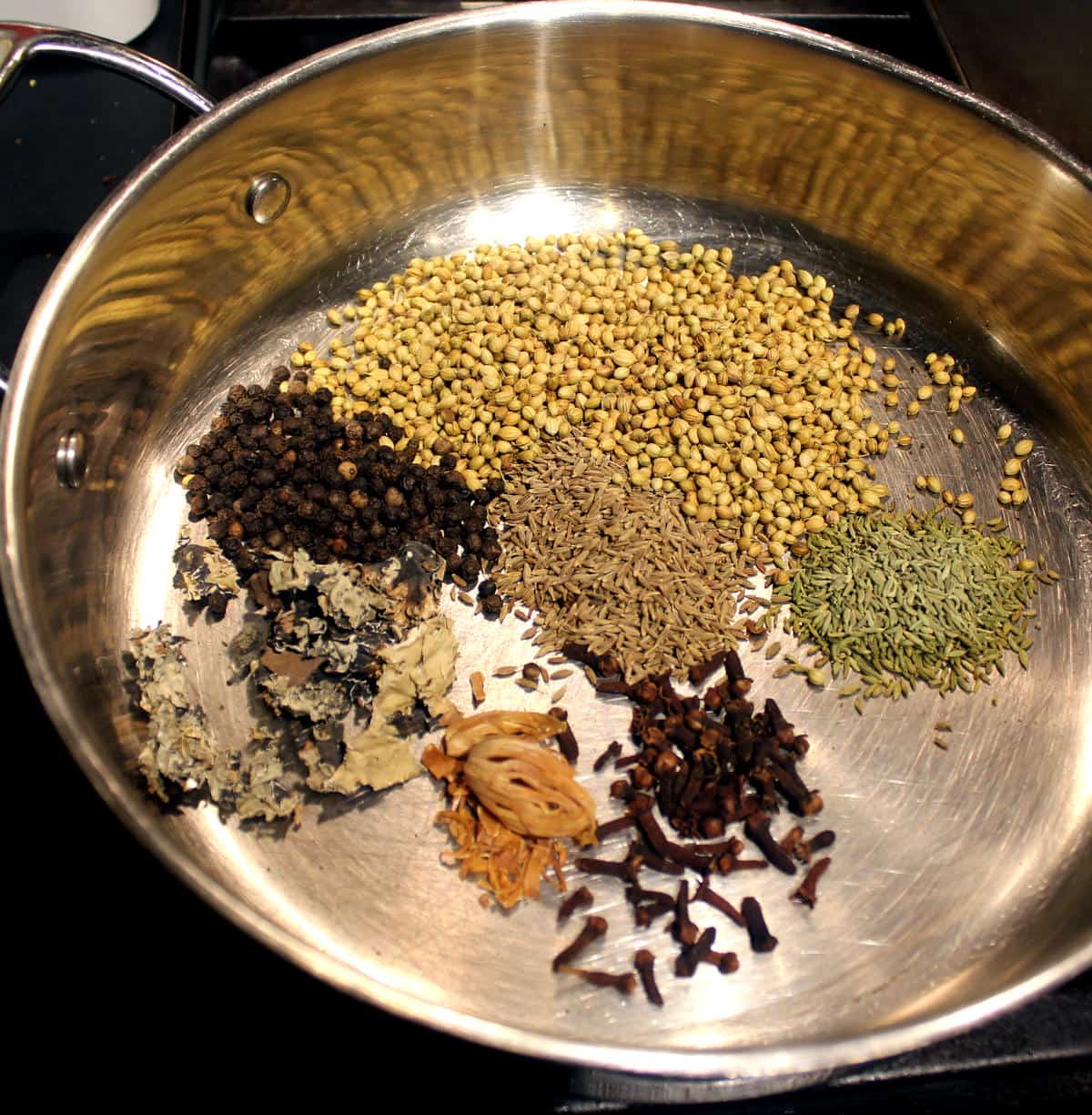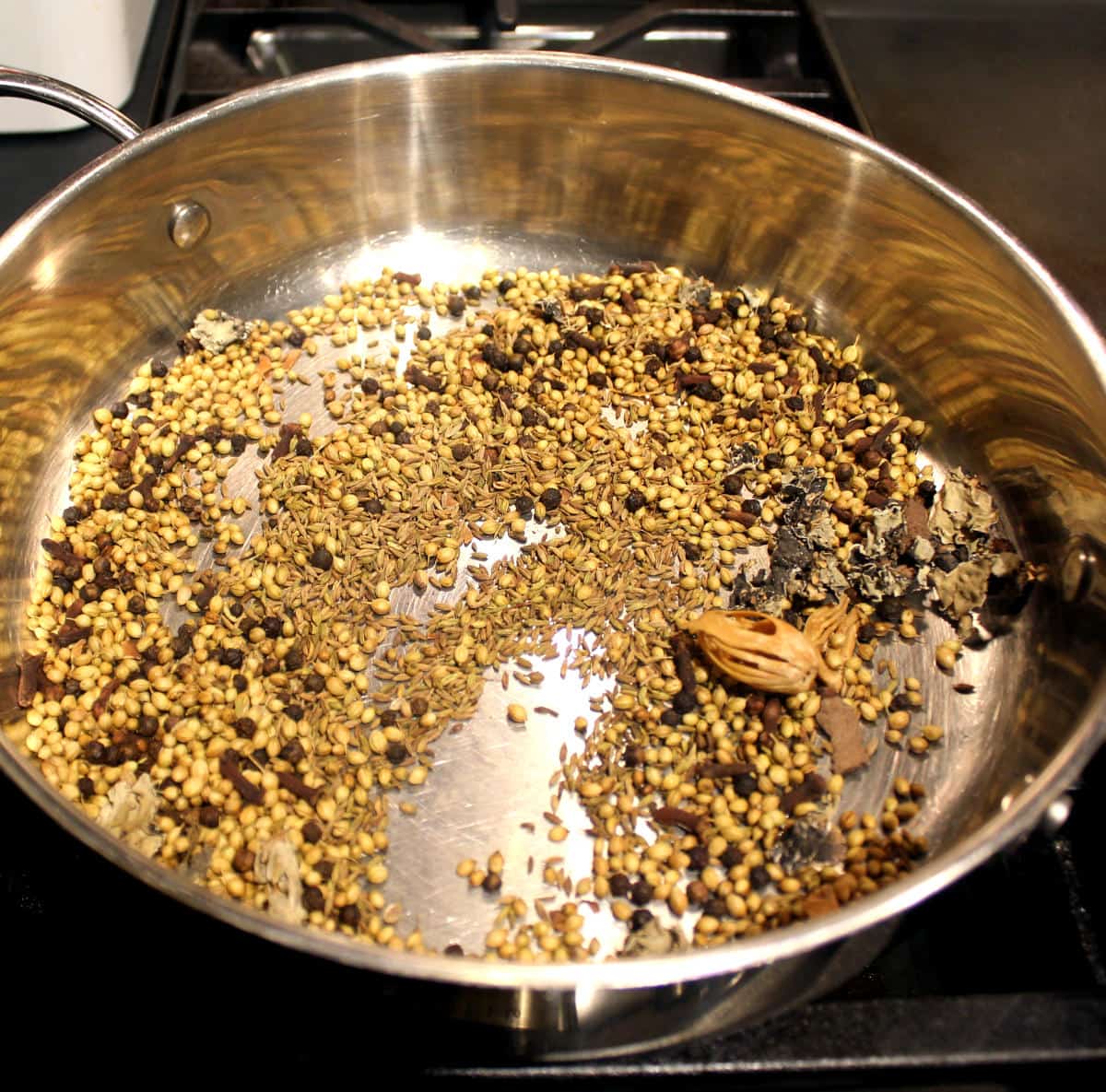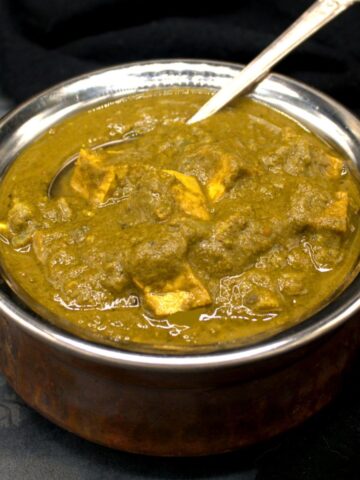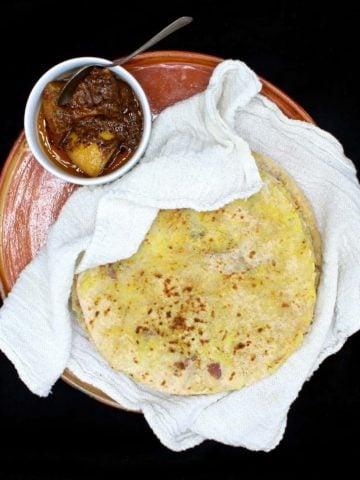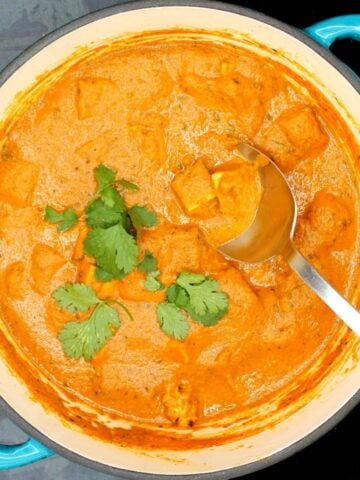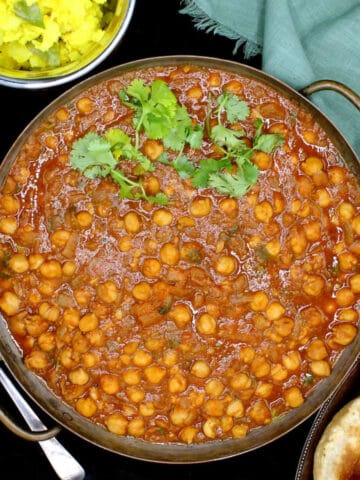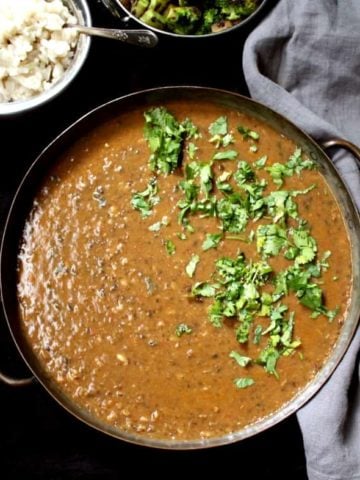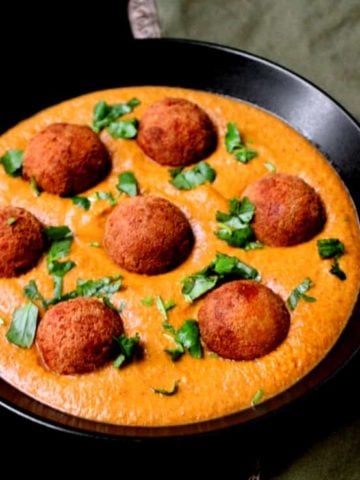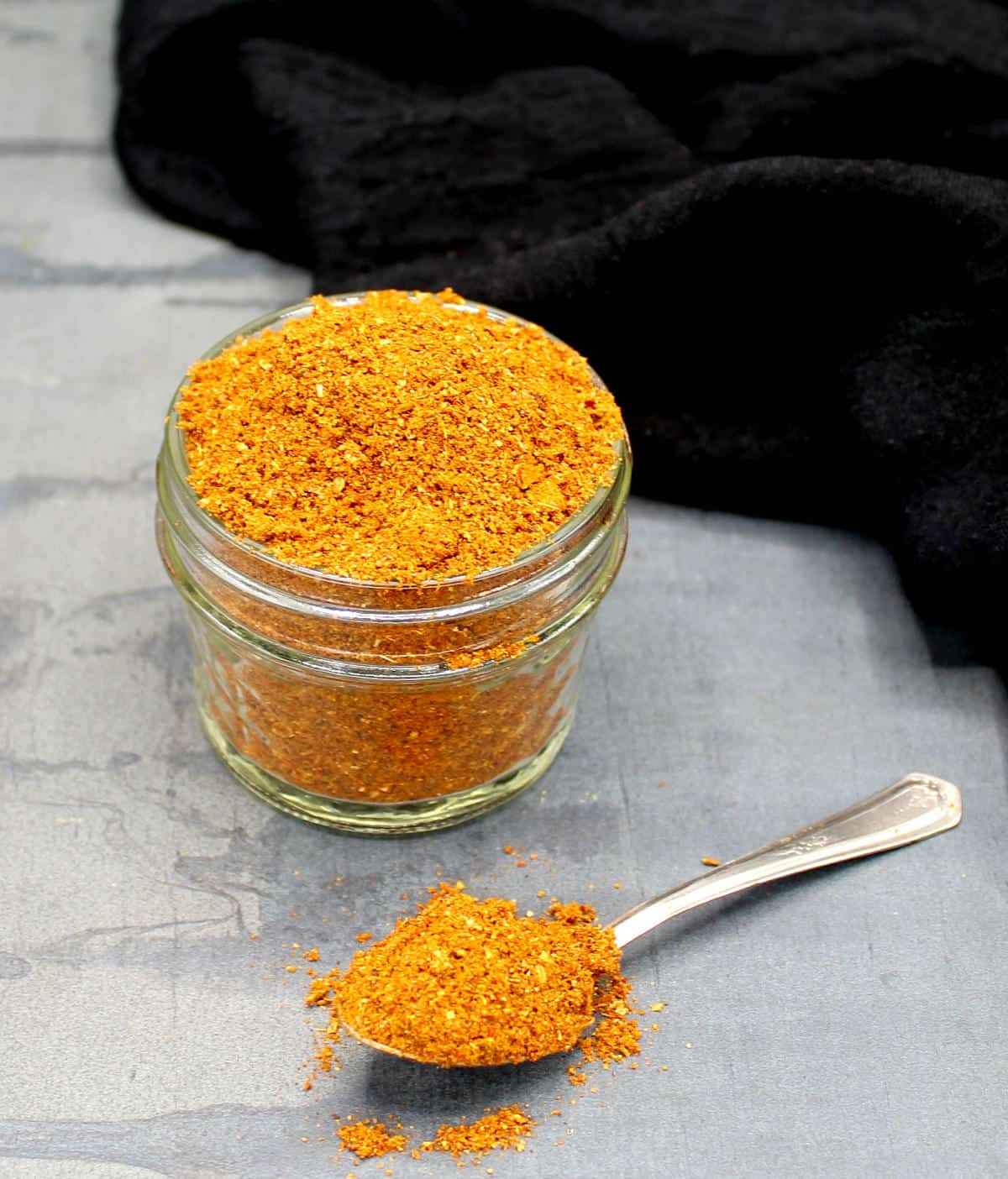Making your own homemade garam masala powder will not just make you feel like a domestic god, it will make your home smell so fragrant, you might find yourself craving great Indian food. And that’s perfect, because there’s no limit to the delicious recipes you can make with this versatile Indian spice blend.
What is garam masala?
Garam masala is an aromatic mix of spices that warm the body. Garam, in Hindi, means hot, and masala is a spice mix. There are thousands of powdered spiced blends used across India, and garam masala originated in India’s northern states, which, contrary to stereotypes about Indian weather, tend to get bitterly cold. A typical garam masala spice mix would include cinnamon, black cardamom, cloves, cinnamon and peppercorns, all considered warming spices. For modern, all-weather use, most garam masala recipes now add balance by mixing in cooling spices, like fennel, green cardamom and coriander seed. “Garam masala” is commonly understood outside India to mean the powdered spice blend. In India it can refer to a mix of whole spices as well (“whole garam masala”). Indian cooks distinguish between the two by calling the powdered blend “garam masala powder.”
How to make garam masala (step by step)
Indian recipes that use garam masala
Recipe card
Cinnamon (dalchini): The benefits of this deep earthen-hued spice sourced from the bark of a tree range from lowering blood sugar levels to lowering cholesterol, fighting cancer and helping weight loss. It is also delicious, with spicy-sweet notes. The best cinnamon for Indian recipes is ceylon cinnamon. It is thinner and has a more delicate and sweeter flavor than the cassia cinnamon typically found here in the United States, which is thicker and rougher. Cloves (laung): These tiny dry, brown spices–which are actually flowers of the clove tree, have potent properties, including the ability to improve liver function, reduce ulcers and fight free radicals. Like cinnamon, this is an incredibly aromatic spice. Chew on one after meals for fresh breath. Bay leaves (tej patta): More of a herb than a spice, this is not an ingredient whose flavor profile is immediately obvious. In spice mixes bay leaves add subtle, flowery, herbal and slightly bitter notes. They help heal wounds and are anti-bacterial and anti-viral, among other benefits. Black cardamom (badi elaichi, kali elaichi): Despite their similar names–and the fact that they are both seed pods–green and black cardamom have very different flavor profiles. While the green variety is sweet and fragrant, the black pod, which looks more brown than black, is strong and smoky. But those properties make it an amazing addition to garam masala. The health benefits of this spice range from improving digestive health to heart health. It is also a diuretic. Green cardamom (hari elaichi): This is my favorite spice of all, because it is simply so exquisite, with that heady aroma. That aroma, and the natural sweetness of this spice, make it a natural addition to Indian sweets and in Indian-inspired recipes like the Vegan Turmeric Cake. But it holds its own in spicy dishes and blends like garam masala. It can also help guard against cancer, improve liver health and it is a powerful antibacterial, among its other benefits. Cumin seeds (jeera): Earthy but bold, cumin is one of the most ubiquitous spices in south Asian, middle eastern, north African and Latin-American cuisine. It can help reduce cholesterol and aid in weight loss. Coriander seeds (dhania ke beej): These are the dried fruit of the herb we call cilantro, with a taste that is somewhat similar although more concentrated. Coriander brings citrusy, floral freshness to a recipe and I cannot imagine being without in my kitchen. It also has great digestive benefits and is an antidiabetic and antioxidant. Fennel seeds (saunf): Fennel seed comes from the plant whose crunchy bulb is often added to salads and whose leaves make an amazing fennel fronds pesto. Fennel seeds taste like licorice and are indispensable in many Indian spices mixes, like panch phoron. They have great digestive and breath-freshening qualities. That’s why they are often offered after a meal in Indian homes and restaurants. Fennel seeds also help reduce water retention and they protect from high blood pressure and cancer. If you don’t have fennel, you can use star anise, or chakra phool, in this recipe, because it has many of the same flavor notes. Mace (javitri): This is the woody kernel of nutmeg, and it is used as a spice all by itself. Mace has a more subtle flavor than nutmeg. Among its many benefits, it helps boost blood circulation and reduce stress. Dry red chili peppers (lal mirch): These are not always added to garam masala, although I like to add a few, both for a touch of heat and for some color. You can leave them out in this recipe or tweak the quantity to your personal preference. If you use it, try and use a chili pepper that imparts bright red color, like Kashmiri chili, but is not too hot. The Kashmiri chili peppers I get at the Indian grocery store here don’t tend to have much color so I added an unconventional ingredient–a couple of Mexican guajillo peppers – for their color and mild heat. Chili peppers are packed with vitamins, and they suppress appetite and kickstart a sluggish metabolism, among other benefits. Black peppercorns (kali mirch, optional): You can skip black peppercorns if you are concerned about the level of heat in the recipe. Or add just a few peppercorns–four or five. Black peppercorns have a host of health benefits, including cancer fighting properties. They are also packed with antioxidants and anti-inflammatories and can help reduce blood sugar and cholesterol levels. Stone flower (dagad phool, patthar ke phool, optional): This is a lichen with a papery, dull, brown appearance. It has a woody, earthy aroma that adds mystical, delicious notes to food–call it the je ne sais quoi factor. It’s benefits range from healing urinary tract infections to improving respiratory and digestive health. You can easily find stone flower at Indian stores but you can leave it out.
Check to get new recipe updates by email.




